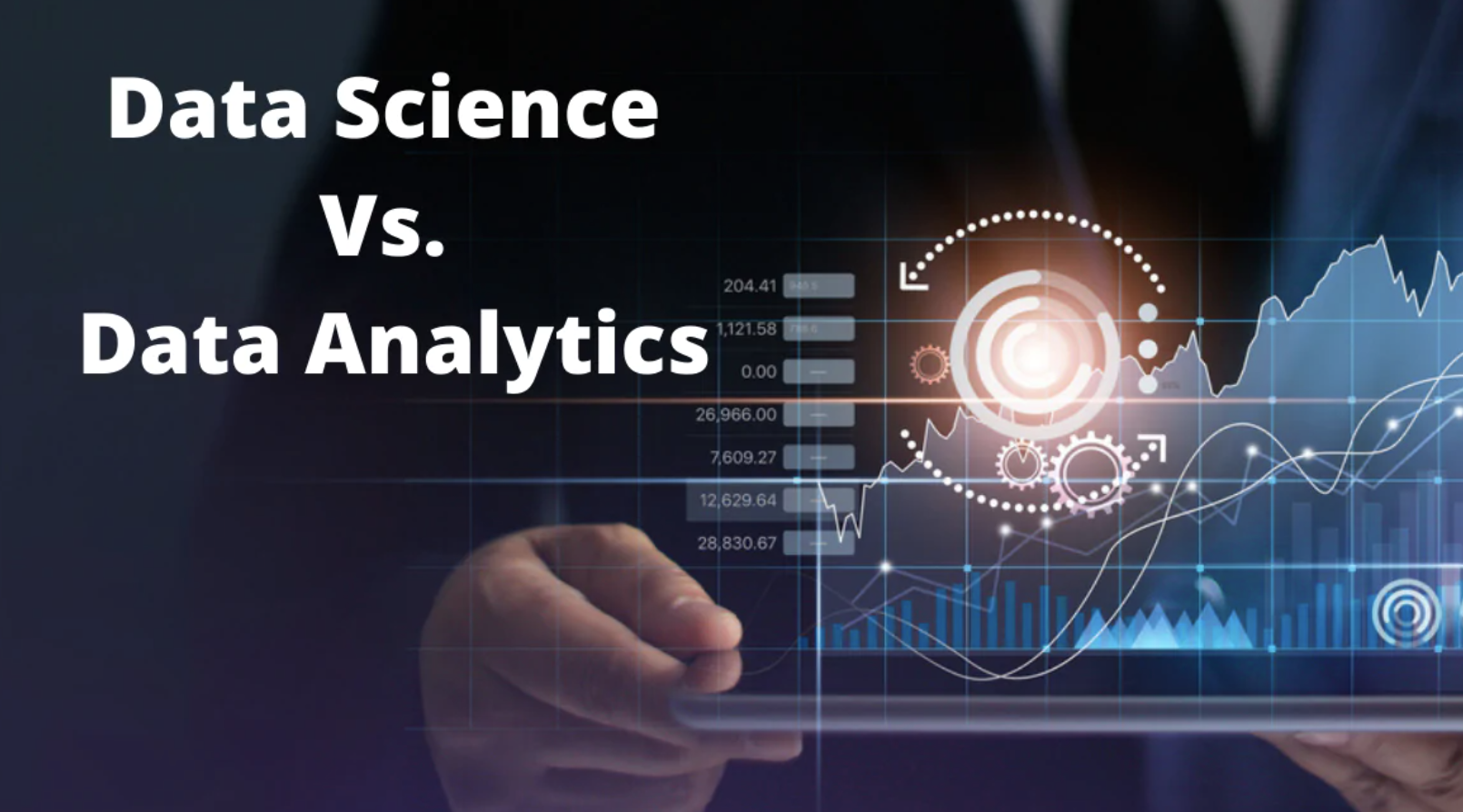Dipanjan (DJ) Sarkar has wanted to work with computers in some capacity since he was a little boy. After mostly playing games (shout out to Doom!), he began programming his computer to complete increasingly complex tasks with a few lines of code. Later, while getting his bachelor’s degree in computer science and engineering, he took some electives around data mining, soft computing, and artificial intelligence. He was hooked.
Dipanjan went on to earn a more data science-focused master’s degree, setting himself up to find a job that would let him “build real-world solutions and systems instead of just working on prototypes, lab experiments, and proof of concepts.”
Dipanjan is now a data scientist, consultant, trainer, and writer. He has consulted and worked for startups as well as Fortune 500 companies like Intel. His current area of focus is predictive analytics, machine learning (ML), deep learning (DL), natural language processing (NLP), and statistical modeling. He also leads training sessions around data science and artificial intelligence. He plans to venture into the world of open-source products to help developers improve their productivity.
A technical writer, Dipanjan has published several books about ML, DL, and NLP. He’s also a key contributor and editor at Towards Data Science. And he shares his data science knowledge on LinkedIn.
As if that weren’t enough, Dipanjan has been a Springboard data science mentor for more than a year.
We recently sat down with him to discuss his data science journey, his favorite professional project, and much more.
Why do you love data science?
I love getting, cleaning, analyzing, visualizing, and modeling on data and facing new challenges every day. I feel satisfied with my work only when my analysis helps in realizing concrete business value and impact.
I also love sharing my knowledge around data science in books, open-source projects, and articles. Receiving feedback from people that what I’ve shared has helped them in their own career and learning is the fuel I need to drive myself further in this field.
Can you tell me about a project you’ve worked on that you’re really proud of?
My favorite data science project is building a generic anomaly detection framework to detect potential anomalies and failures in key infrastructure like network devices, servers, applications, and client systems. The key motivation for this project was that existing monitoring systems are not dynamic, intelligent, and context-aware. Simple threshold-based monitoring systems simply do not cut it anymore in enterprise-grade infrastructure, where a simple spike in critical events can lead to a massive outage.
Anomaly detection is something which is not very new, and we did a lot of research on existing literature pertaining to methods in time-series anomaly detection. We came across interesting statistical and machine learning-based methods. The best part was not just blindly going with the hype of “what might supposedly be best,” but actually validating it with multiple experiments on real-world data from our infrastructure systems.
We found out that many off-the-shelf methods don’t really work very well in our environment and that could be due to the diverse nature of our systems. What worked for us was the SH-ESD algorithm, popularly known as the Seasonal Hybrid-Extreme Studentized Deviate and built as a nice framework by Twitter called AnomalyDetection. But, surprise! The package was built on R (widely used by data scientists mostly for statistical analysis) and we extensively use Python (one of the leading programming languages in the domain of data science) in our production systems, starting from data ingestion and wrangling to modeling and predictions.
The reason why I am really proud of this project is because I had to use my knowledge of inferential statistics and mathematics coupled with my programming skills to build a SH-ESD algorithm from scratch in Python! To be honest, this was the first time I saw a real-world implementation of a statistical test being used in real-time in production for something besides your regular A/B testing.
This project is currently in production, providing daily and nearly real-time anomaly alerts for a wide variety of infrastructure, and is easily extensible to other domains and data sources. Having been involved in this project right from its ideation phase, architecting, developing, and building this solution from the ground up, and now seeing it run successfully in production is why it will always hold a special place in my heart.
Get To Know Other Data Science Students
Haotian Wu
Data Scientist at RepTrak
Garrick Chu
Contract Data Engineer at Meta
Hastings Reeves
Business Intelligence Analyst at Velocity Global
What did you learn from the project?
From working on this project I learned a few things. Always visualize your data, observe key trends, and don’t proceed blindly based on statistical measures (no wonder we can easily lie with statistics). Also, off-the-shelf products or frameworks might not work well for you, so don’t force-fit them. Build something if you need to, but never re-invent the wheel!
Also, in the real world, always have conversations with the key stakeholders so you know what you are working with and toward. Set key success criteria and work toward it, so you always keep in mind the business impact your project has.
Lastly, keep things simple—always follow the principle of Occam’s razor. Don’t build complex, fancy, and sophisticated models just for the sake of it; always make sure it is relevant to solving the problem at hand.
Do you use data science outside of a professional environment?
I used to try to forecast my overall spending on things like transport, food, utilities, and so on based on my past historical data. But I’ve given up considering how much I keep spending on food and unnecessary things!
I also used data science (clustering/grouping) to help identify similar data points based on financial/bank records for my dad sometime back. That was a really nice mini-project for me and helped him a lot too.
What publications do you follow to stay up to date on data science news and cutting-edge technologies?
The primary sources I use are Elsevier, Springer, ArXiv, ACM, and IEEE for more research-oriented content. Safari Books in general provides me with a vast library of technical books from Springer, Apress, Packt, O’Reilly, Manning, etc. For online publications, I follow Towards Data Science, KDnuggets, Mashable, TechCrunch, Hacker News, Wired, and Hacker Noon whenever I have some extra time.
What are a few of your favorite things you’ve written?
I have published a couple of data science papers in journals like IEEE and Elsevier on topics around image steganography and infrastructure fault prediction with machine learning. One of the books I published is available through Springer/Apress and Packt on the topic of machine learning, social media analytics, natural language processing, and deep learning using both R and Python. One of my favorite books is my recent one, “Hands-On Transfer Learning with Python.” I’ve even open-sourced all the examples on GitHub for everyone.
Occasionally, I’ll contribute articles for Toward Data Science. I wrote one around effective visualization of multi-dimensional data which is definitely one of my favorite pieces I have worked on. Some of my other articles can be found on Medium.
Companies are no longer just collecting data. They’re seeking to use it to outpace competitors, especially with the rise of AI and advanced analytics techniques. Between organizations and these techniques are the data scientists – the experts who crunch numbers and translate them into actionable strategies. The future, it seems, belongs to those who can decipher the story hidden within the data, making the role of data scientists more important than ever.
In this article, we’ll look at 13 careers in data science, analyzing the roles and responsibilities and how to land that specific job in the best way. Whether you’re more drawn out to the creative side or interested in the strategy planning part of data architecture, there’s a niche for you.
Is Data Science A Good Career?
Yes. Besides being a field that comes with competitive salaries, the demand for data scientists continues to increase as they have an enormous impact on their organizations. It’s an interdisciplinary field that keeps the work varied and interesting.
10 Data Science Careers To Consider
Whether you want to change careers or land your first job in the field, here are 13 of the most lucrative data science careers to consider.
Data Scientist
Data scientists represent the foundation of the data science department. At the core of their role is the ability to analyze and interpret complex digital data, such as usage statistics, sales figures, logistics, or market research – all depending on the field they operate in.
They combine their computer science, statistics, and mathematics expertise to process and model data, then interpret the outcomes to create actionable plans for companies.
General Requirements
A data scientist’s career starts with a solid mathematical foundation, whether it’s interpreting the results of an A/B test or optimizing a marketing campaign. Data scientists should have programming expertise (primarily in Python and R) and strong data manipulation skills.
Although a university degree is not always required beyond their on-the-job experience, data scientists need a bunch of data science courses and certifications that demonstrate their expertise and willingness to learn.
Average Salary
The average salary of a data scientist in the US is $156,363 per year.
Data Analyst
A data analyst explores the nitty-gritty of data to uncover patterns, trends, and insights that are not always immediately apparent. They collect, process, and perform statistical analysis on large datasets and translate numbers and data to inform business decisions.
A typical day in their life can involve using tools like Excel or SQL and more advanced reporting tools like Power BI or Tableau to create dashboards and reports or visualize data for stakeholders. With that in mind, they have a unique skill set that allows them to act as a bridge between an organization’s technical and business sides.
General Requirements
To become a data analyst, you should have basic programming skills and proficiency in several data analysis tools. A lot of data analysts turn to specialized courses or data science bootcamps to acquire these skills.
For example, Coursera offers courses like Google’s Data Analytics Professional Certificate or IBM’s Data Analyst Professional Certificate, which are well-regarded in the industry. A bachelor’s degree in fields like computer science, statistics, or economics is standard, but many data analysts also come from diverse backgrounds like business, finance, or even social sciences.
Average Salary
The average base salary of a data analyst is $76,892 per year.
Business Analyst
Business analysts often have an essential role in an organization, driving change and improvement. That’s because their main role is to understand business challenges and needs and translate them into solutions through data analysis, process improvement, or resource allocation.
A typical day as a business analyst involves conducting market analysis, assessing business processes, or developing strategies to address areas of improvement. They use a variety of tools and methodologies, like SWOT analysis, to evaluate business models and their integration with technology.
General Requirements
Business analysts often have related degrees, such as BAs in Business Administration, Computer Science, or IT. Some roles might require or favor a master’s degree, especially in more complex industries or corporate environments.
Employers also value a business analyst’s knowledge of project management principles like Agile or Scrum and the ability to think critically and make well-informed decisions.
Average Salary
A business analyst can earn an average of $84,435 per year.
Database Administrator
The role of a database administrator is multifaceted. Their responsibilities include managing an organization’s database servers and application tools.
A DBA manages, backs up, and secures the data, making sure the database is available to all the necessary users and is performing correctly. They are also responsible for setting up user accounts and regulating access to the database. DBAs need to stay updated with the latest trends in database management and seek ways to improve database performance and capacity. As such, they collaborate closely with IT and database programmers.
General Requirements
Becoming a database administrator typically requires a solid educational foundation, such as a BA degree in data science-related fields. Nonetheless, it’s not all about the degree because real-world skills matter a lot. Aspiring database administrators should learn database languages, with SQL being the key player. They should also get their hands dirty with popular database systems like Oracle and Microsoft SQL Server.
Average Salary
Database administrators earn an average salary of $77,391 annually.
Data Engineer
Successful data engineers construct and maintain the infrastructure that allows the data to flow seamlessly. Besides understanding data ecosystems on the day-to-day, they build and oversee the pipelines that gather data from various sources so as to make data more accessible for those who need to analyze it (e.g., data analysts).
General Requirements
Data engineering is a role that demands not just technical expertise in tools like SQL, Python, and Hadoop but also a creative problem-solving approach to tackle the complex challenges of managing massive amounts of data efficiently.
Usually, employers look for credentials like university degrees or advanced data science courses and bootcamps.
Average Salary
Data engineers earn a whooping average salary of $125,180 per year.
Database Architect
A database architect’s main responsibility involves designing the entire blueprint of a data management system, much like an architect who sketches the plan for a building. They lay down the groundwork for an efficient and scalable data infrastructure.
Their day-to-day work is a fascinating mix of big-picture thinking and intricate detail management. They decide how to store, consume, integrate, and manage data by different business systems.
General Requirements
If you’re aiming to excel as a database architect but don’t necessarily want to pursue a degree, you could start honing your technical skills. Become proficient in database systems like MySQL or Oracle, and learn data modeling tools like ERwin. Don’t forget programming languages – SQL, Python, or Java.
If you want to take it one step further, pursue a credential like the Certified Data Management Professional (CDMP) or the Data Science Bootcamp by Springboard.
Average Salary
Data architecture is a very lucrative career. A database architect can earn an average of $165,383 per year.
Machine Learning Engineer
A machine learning engineer experiments with various machine learning models and algorithms, fine-tuning them for specific tasks like image recognition, natural language processing, or predictive analytics. Machine learning engineers also collaborate closely with data scientists and analysts to understand the requirements and limitations of data and translate these insights into solutions.
General Requirements
As a rule of thumb, machine learning engineers must be proficient in programming languages like Python or Java, and be familiar with machine learning frameworks like TensorFlow or PyTorch. To successfully pursue this career, you can either choose to undergo a degree or enroll in courses and follow a self-study approach.
Average Salary
Depending heavily on the company’s size, machine learning engineers can earn between $125K and $187K per year, one of the highest-paying AI careers.
Quantitative Analyst
Qualitative analysts are essential for financial institutions, where they apply mathematical and statistical methods to analyze financial markets and assess risks. They are the brains behind complex models that predict market trends, evaluate investment strategies, and assist in making informed financial decisions.
They often deal with derivatives pricing, algorithmic trading, and risk management strategies, requiring a deep understanding of both finance and mathematics.
General Requirements
This data science role demands strong analytical skills, proficiency in mathematics and statistics, and a good grasp of financial theory. It always helps if you come from a finance-related background.
Average Salary
A quantitative analyst earns an average of $173,307 per year.
Data Mining Specialist
A data mining specialist uses their statistics and machine learning expertise to reveal patterns and insights that can solve problems. They swift through huge amounts of data, applying algorithms and data mining techniques to identify correlations and anomalies. In addition to these, data mining specialists are also essential for organizations to predict future trends and behaviors.
General Requirements
If you want to land a career in data mining, you should possess a degree or have a solid background in computer science, statistics, or a related field.
Average Salary
Data mining specialists earn $109,023 per year.
Data Visualisation Engineer
Data visualisation engineers specialize in transforming data into visually appealing graphical representations, much like a data storyteller. A big part of their day involves working with data analysts and business teams to understand the data’s context.
General Requirements
Data visualization engineers need a strong foundation in data analysis and be proficient in programming languages often used in data visualization, such as JavaScript, Python, or R. A valuable addition to their already-existing experience is a bit of expertise in design principles to allow them to create visualizations.
Average Salary
The average annual pay of a data visualization engineer is $103,031.
Resources To Find Data Science Jobs
The key to finding a good data science job is knowing where to look without procrastinating. To make sure you leverage the right platforms, read on.
Job Boards
When hunting for data science jobs, both niche job boards and general ones can be treasure troves of opportunity.
Niche boards are created specifically for data science and related fields, offering listings that cut through the noise of broader job markets. Meanwhile, general job boards can have hidden gems and opportunities.
Online Communities
Spend time on platforms like Slack, Discord, GitHub, or IndieHackers, as they are a space to share knowledge, collaborate on projects, and find job openings posted by community members.
Network And LinkedIn
Don’t forget about socials like LinkedIn or Twitter. The LinkedIn Jobs section, in particular, is a useful resource, offering a wide range of opportunities and the ability to directly reach out to hiring managers or apply for positions. Just make sure not to apply through the “Easy Apply” options, as you’ll be competing with thousands of applicants who bring nothing unique to the table.
FAQs about Data Science Careers
We answer your most frequently asked questions.
Do I Need A Degree For Data Science?
A degree is not a set-in-stone requirement to become a data scientist. It’s true many data scientists hold a BA’s or MA’s degree, but these just provide foundational knowledge. It’s up to you to pursue further education through courses or bootcamps or work on projects that enhance your expertise. What matters most is your ability to demonstrate proficiency in data science concepts and tools.
Does Data Science Need Coding?
Yes. Coding is essential for data manipulation and analysis, especially knowledge of programming languages like Python and R.
Is Data Science A Lot Of Math?
It depends on the career you want to pursue. Data science involves quite a lot of math, particularly in areas like statistics, probability, and linear algebra.
What Skills Do You Need To Land an Entry-Level Data Science Position?
To land an entry-level job in data science, you should be proficient in several areas. As mentioned above, knowledge of programming languages is essential, and you should also have a good understanding of statistical analysis and machine learning. Soft skills are equally valuable, so make sure you’re acing problem-solving, critical thinking, and effective communication.
Since you’re here…Are you interested in this career track? Investigate with our free guide to what a data professional actually does. When you’re ready to build a CV that will make hiring managers melt, join our Data Science Bootcamp which will help you land a job or your tuition back!






